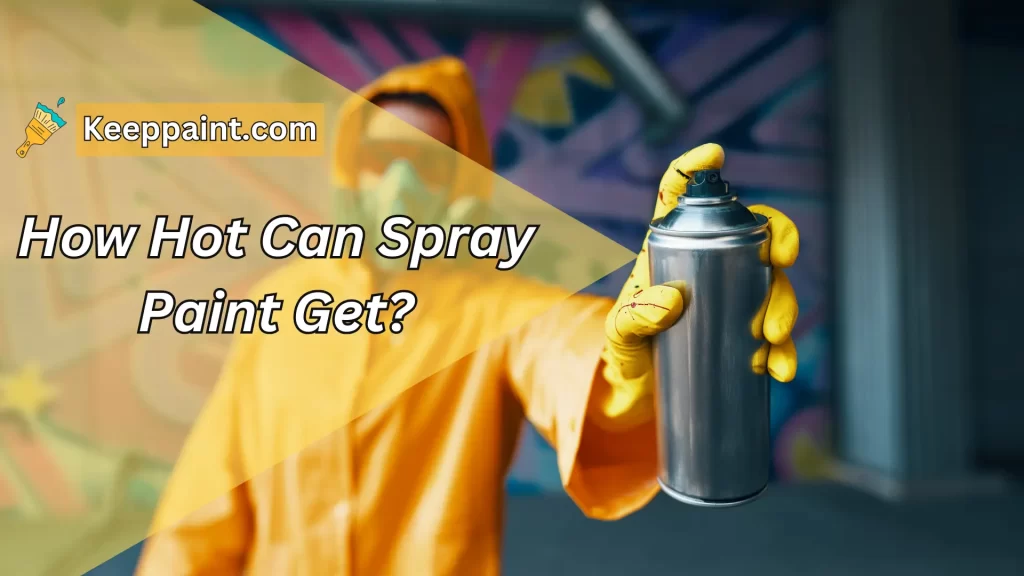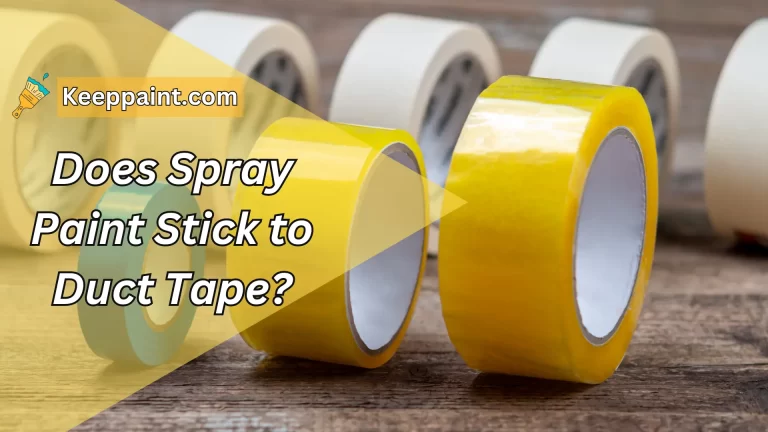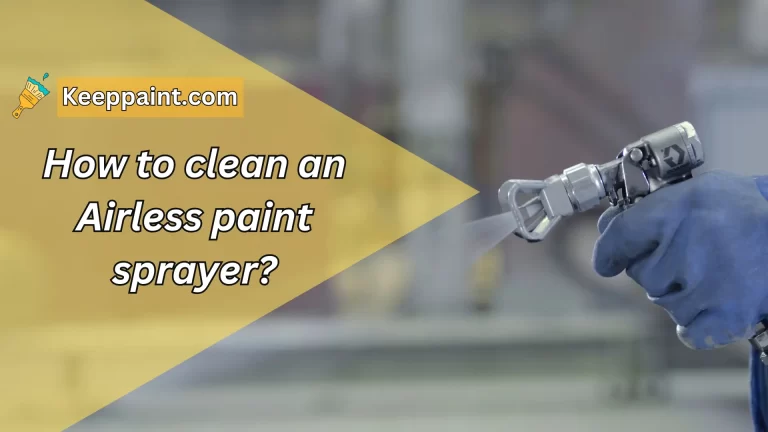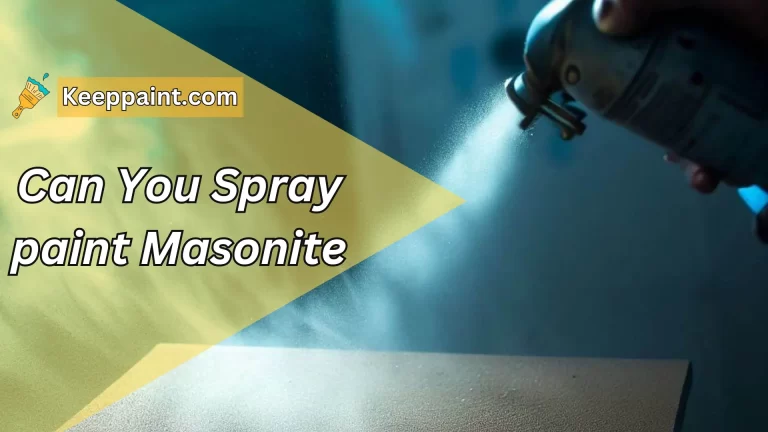Step into the world of spray painting, where creativity meets heat. Whether you’re a DIY enthusiast or a professional artist, using spray paint can unlock endless possibilities for transforming ordinary objects into extraordinary works of art.
But have you ever wondered just how hot that vibrant coat of color can get? Let’s dive deep into the science behind how hot can spray paint get and explore the potential dangers it poses. So grab your respirator and buckle up as we uncover the sizzling secrets of high heat spray paint!

The Science Behind Hot Spray Paint
When it comes to spray painting, understanding the science behind hot spray paint is crucial. It’s not just a matter of aesthetics; there are real chemical reactions happening when you apply heat to paint.
At its core, spray paint consists of pigments, solvents, and binders. The solvents help the pigments dissolve and spread evenly, while the binders hold everything together once the solvent evaporates. But what happens when you introduce heat?
Well, as heat is applied to the painted surface, the solvents begin to evaporate at an accelerated rate. This causes the binder and pigments to solidify quickly onto whatever surface they’ve been sprayed onto.
Additionally, some types of spray paints contain additives that allow them to withstand high temperatures without blistering or peeling. These specialty high heat paints often incorporate ceramic particles or other materials that can handle extreme temperatures.
Understanding these scientific principles helps explain why high heat spray paints exist for specific applications like automotive engines or barbecue grills – areas where extreme temperatures are common.
The Dangers of Hot Spray Paint
Most people don’t give much thought to the temperature at which it operates. However, understanding the dangers associated with hot spray paint is essential for your safety.
One of the primary risks of hot spray paint is its flammability. Spray paints are typically made up of volatile organic compounds that can easily catch fire when exposed to high temperatures or open flames. This means that if you use hot spray paint near a heat source or in a confined space without proper ventilation, you’re putting yourself at risk of starting a fire.
In addition to the risk of fires, hot spray paint can also release toxic fumes when heated. These fumes can be harmful if inhaled and may cause respiratory problems, dizziness, headaches, and even organ damage over time. It’s important to note that some types of specialized high heat sprays contain additional chemicals designed specifically for extreme temperatures, increasing the potential health hazards.
Furthermore, using hot spray paint without adequate protection can lead to serious skin burns. The high temperatures reached by certain types of spray paints can cause severe burns upon contact with unprotected skin. It’s crucial to always wear appropriate protective gear such as gloves and long sleeves when working with these products.
To minimize these dangers and protect yourself from harm while using hot spray paint, there are several precautions you should take. First and foremost, always read and follow the instructions provided by the manufacturer on how to safely use their specific product. Ensure that you have proper ventilation in your workspace by opening windows or using fans.
Additionally, consider wearing a respirator mask rated for VOCs to prevent inhalation of harmful fumes. Use heat resistant materials for surfaces that will come into direct contact with hot sprayed surfaces whenever possible.
Remember: safety should never be compromised! Understanding and respecting the potential dangers associated with using hot spray paint is crucial for protecting yourself and those around you. Stay informed, follow safety guidelines, and prioritize your well
How hot can spray paint get?
When it comes to spray paint, most of us are familiar with its ability to transform ordinary objects into something extraordinary. But have you ever wondered how hot spray paint can actually get? Let’s delve into the science behind it.
Spray paints are typically made up of a combination of solvents, pigments, and binders. When these components are mixed together and sprayed onto a surface, they undergo a chemical reaction known as “curing.” This process involves the evaporation of solvents and the cross linking of binders, resulting in a durable coating.
During curing, spray paint can reach temperatures upwards of 200 degrees Fahrenheit (93 degrees Celsius). These high temperatures occur as a result of both the chemical reaction taking place and the exothermic properties of certain binders used in high heat spray paints.
While this level of heat may not seem extreme compared to other sources like fire or welding torches, it is still important to exercise caution when working with hot spray paint. The intense heat can pose potential risks if proper safety measures aren’t followed.
One danger associated with hot spray paint is that it can cause burns if touched before it has cooled down. Additionally, inhaling fumes from heated spray paint can be harmful to your respiratory system.
How to Protect Yourself From Hot Spray Paint
When it comes to working with hot spray paint, it’s crucial to prioritize safety. Here are some essential tips on how to protect yourself from potential hazards.
Wear Protective Gear:
Before starting any spray painting project, make sure you’re properly equipped with the right protective gear. This includes wearing gloves, safety goggles or glasses, and a respirator mask to prevent inhalation of harmful fumes.
Choose a Well Ventilated Area:
Spray painting should always be done in a well ventilated space or outdoors where there is ample airflow. This helps dissipate any potentially toxic fumes and reduces the risk of respiratory issues.
Use Heat Resistant Paints:
If you’re planning on using high heat spray paint for surfaces that will be exposed to extreme temperatures, ensure that you select paints specifically designed for these conditions. High heat paints can withstand temperatures up to 1200°F (648°C) and provide better longevity compared to regular spray paints.
Maintain Proper Distance:
When spraying hot paint onto surfaces, maintaining the recommended distance between the nozzle and the object is important for achieving an even coat without risking overheating or damage due to excessive heat concentration.
Allow Sufficient Drying Time:
After applying hot spray paint onto your desired surface, give it enough time to dry completely before subjecting it to further use or heat exposure. This ensures that the paint adheres properly and minimizes peeling or bubbling issues down the line.
Remember, taking precautions when working with hot spray paint is vital not only for your personal safety but also for ensuring optimal results in your projects! Stay safe and happy painting!
FAQs
Can I use regular spray paint for high heat applications?
No, using regular spray paint for high heat applications is not recommended. Regular spray paints are not designed to withstand the extreme temperatures generated by heating elements or engine parts and may fail under such conditions.
Is there an alternative to high heat spray paint?
Yes! If you don’t have access to high heat spray paint or need an immediate solution while waiting for proper supplies, You could consider using other methods such as powder coating or ceramic coatings specially formulated for high temperatures to provide similar protection against extreme heat. When it comes to working with elevated temperatures,
It’s always best to consult a professional or the manufacturer for specific recommendations and guidance.
Conclusion
In conclusion, understanding how hot spray paint can get is essential for safety and practical reasons. Spray paint can get quite hot, especially during prolonged use or when exposed to direct sunlight or high temperature environments. This heat can pose risks to both the user and the painted surface.
It’s crucial to handle spray paint with care, wear protective gear, and work in well ventilated areas to minimize any potential hazards associated with its temperature. Additionally, be mindful of storing spray paint cans in a cool, dry place to prevent overheating.
Knowing the temperature limitations of spray paint can help ensure that your painting projects are successful and safe. So, whether you’re a DIY enthusiast or a professional painter, always consider the heat factor when working with spray paint to achieve the best results while staying safe.






